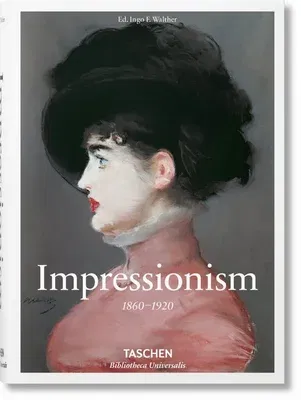It was a dappled and daubed harbor scene that gave Impressionism its
name. When Impression, Sunrise by Claude Monet was exhibited in April
1874, critics seized upon the work's title and its loose stylistic
rendering of light and motion upon water to deride this new,
impressionistic tendency in art.
As with many seminal art movements, the critics got their comeuppance.
Today, Impressionism is close contender for the world's favorite period
of painting. With blockbuster exhibitions, record-breaking auction
prices, and packed museums, the works once dismissed as unfinished or
imprecise are now beloved for their atmospheric evocation of time and
place, as well as the stylistic flair of rapid brushstrokes upon canvas.
Despite its popularity and a whole host of publications, many areas and
artists of Impressionism remain inadequately researched. This TASCHEN
book fills the gap, raising the profile of unjustly neglected pioneers
such as Berthe Morisot, Lucien Pissarro, and Gustave Caillebotte, while
exploring the characteristics of Impressionism, from painting en plein
air to vivid color contrasts, not only in the movement's native France
but also across the rest of Europe and North America.
About the series
Bibliotheca Universalis -- Compact cultural companions celebrating the
eclectic TASCHEN universe!

